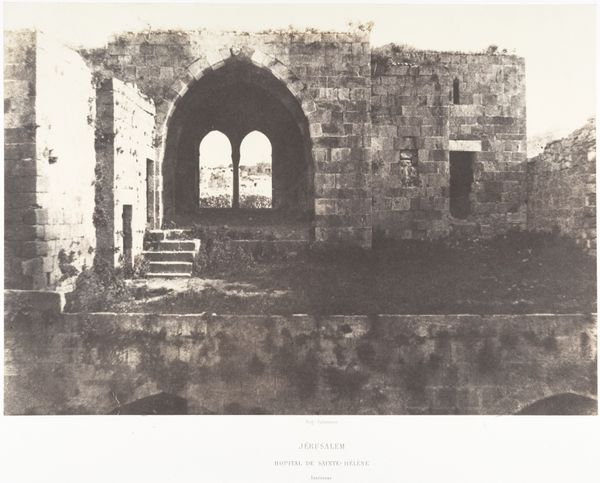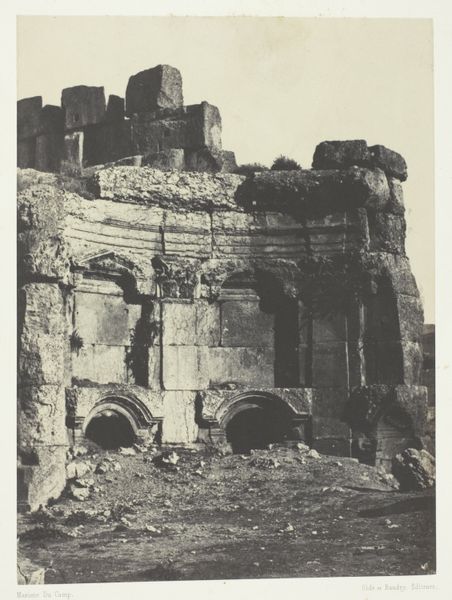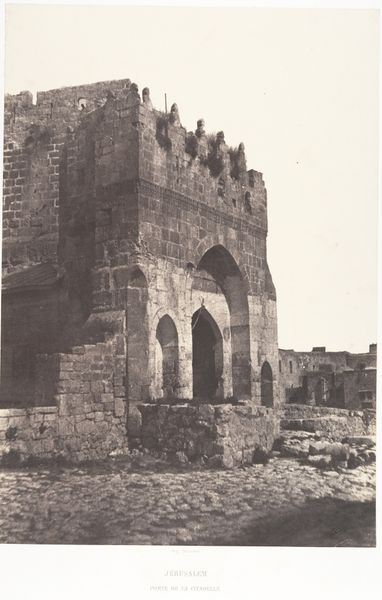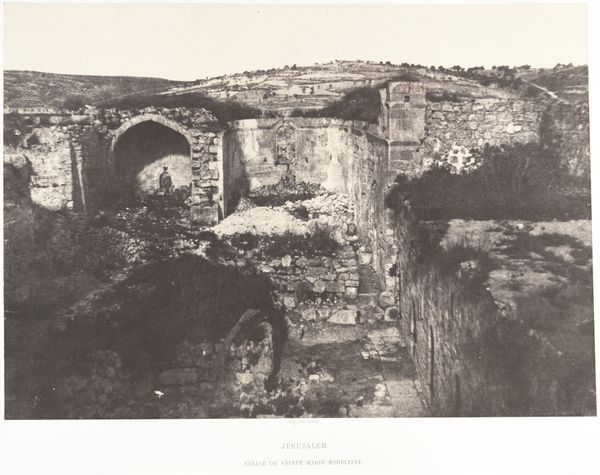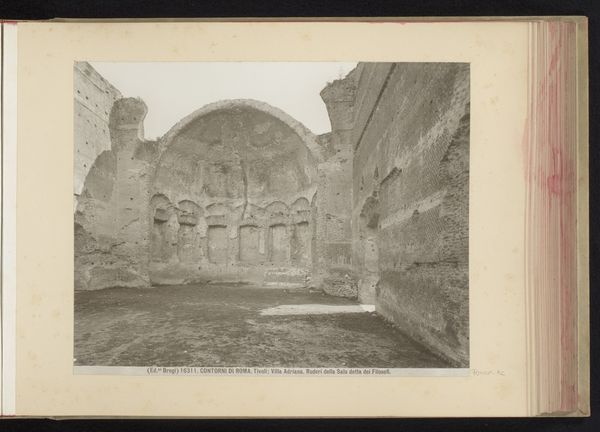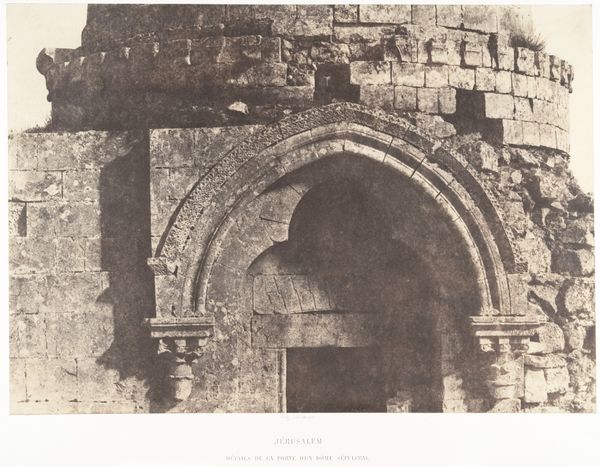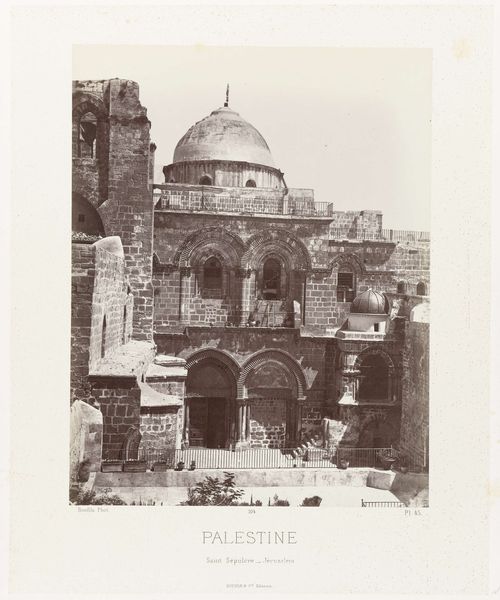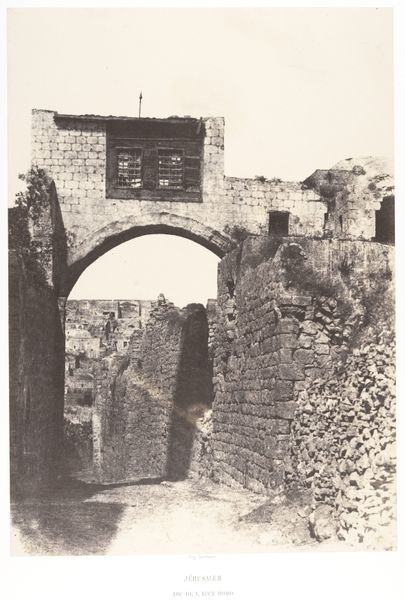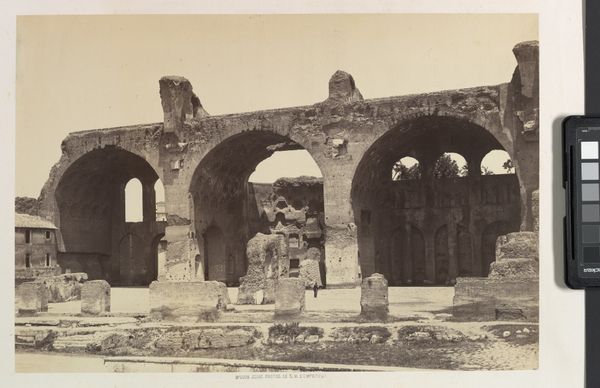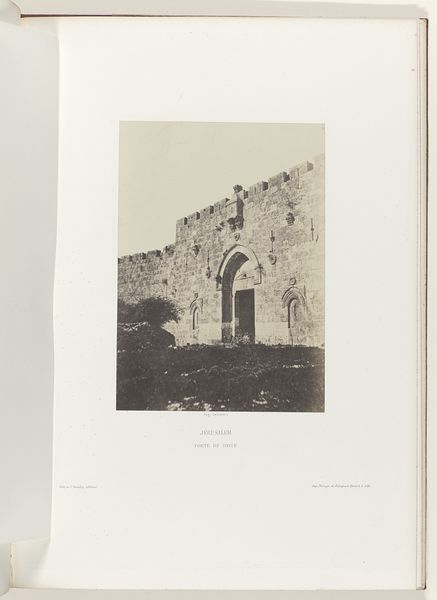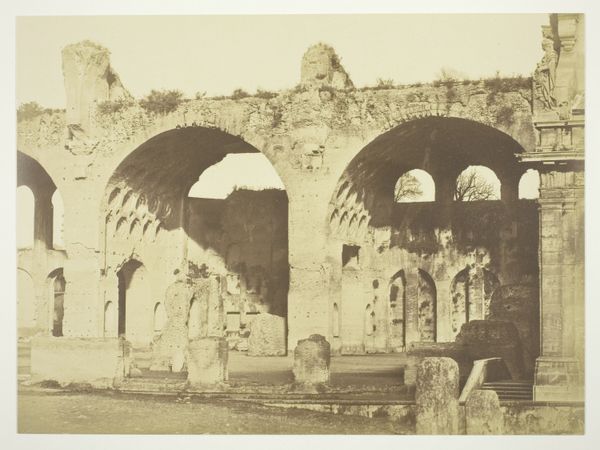
Jérusalem, Sainte-Marie-la-Grande, Cloître 1854 - 1859
0:00
0:00
photography, gelatin-silver-print, architecture
#
landscape
#
photography
#
gelatin-silver-print
#
architecture
Dimensions: Image: 23 x 32.9 cm (9 1/16 x 12 15/16 in.) Mount: 44.3 x 60.4 cm (17 7/16 x 23 3/4 in.)
Copyright: Public Domain
Curator: Editor: Looking at Auguste Salzmann’s photograph, “Jerusalem, Sainte-Marie-la-Grande, Cloître” from the 1850s, made using the gelatin-silver process, it strikes me how much the process of creation emphasizes the sheer materiality of the architecture itself. What stands out to you about it? Curator: It's important to consider what Salzmann's method—photography itself—does to the way we perceive the architecture. Gelatin-silver printing, even at this early stage, was relatively reproducible. It brings a question of accessibility to religious sites, shifting the "aura" Walter Benjamin talked about. The photograph as a commodity creates a new dynamic between the viewer and the site. How does this contrast with, say, the experience of a pilgrim traveling to Jerusalem? Editor: That’s an interesting point, the pilgrimage would have been such a physically laborious and devout act, whereas, looking at it today in the museum, the process of viewing becomes about mass production and consumption. Is it, perhaps, almost desacralizing? Curator: Exactly. Consider, too, that these early photographs were often commissioned. The economic forces at play in documenting and distributing images of the Holy Land further complicate any purely spiritual reading. Who commissioned the photographs? How were they meant to be used? Editor: Right, that contextualization totally shifts the understanding. It isn't just about capturing a beautiful landscape. It's a record tied to production, labor, and maybe even power. Thanks! Curator: My pleasure. Seeing art through a material lens helps reveal hidden layers of meaning and power that we might otherwise overlook.
Comments
No comments
Be the first to comment and join the conversation on the ultimate creative platform.
